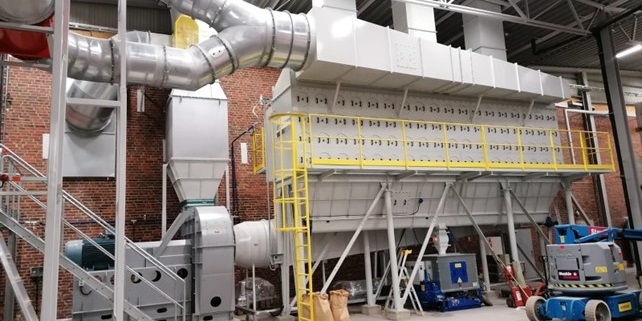What are explosive dusts and in which industries can they be found? In this article, we will take a closer look at what they are, why they pose a risk in industrial workplaces, and the potential consequences of their presence.
What do we mean by explosive dusts? Potentially, all combustible dusts derived from oxidizable metallic materials (aluminum, iron, zinc, magnesium), natural organic substances (grain and cereals, wood, sugar), synthetic substances (plastics, pesticides, organic pigments), as well as peat and coal. These materials are subject to potential explosions, which may vary in magnitude depending on the chemical-physical characteristics of the dust itself and the specific conditions of the environment where the deflagration occurs.
Explosive dusts are classified according to several parameters:
-
Kst and Pmax (maximum explosion pressure of a dust, measured in Bar): this data helps assess the dust explosion risk associated with a plant or process, identifying the level of destructiveness in case of deflagration. The classification ranges from the lowest level, St 0, to the highest, St 3.
-
LEL and UEL (Lower Explosion Limit and Upper Explosion Limit): indicate the explosibility limits, i.e. the concentration of the flammable substance in the air below and above which the atmosphere will not explode.
-
MIE (Minimum Ignition Energy): the minimum ignition energy, i.e. the amount of energy which, under specific test conditions, is capable of igniting the dust and triggering a deflagration.
-
MIT (Minimum Ignition Temperature): the minimum ignition temperature of the dust cloud. Dusts have two ignition temperatures: one relating to the cloud and the other to the ignition of a dust layer.
In which industries can explosive dusts be found?
For a dust explosion to occur, several specific conditions must be present simultaneously. These five factors, known as the explosion pentagon, are:
-
Oxidizer, usually the oxygen present in the air
-
Ignition source
-
Confined environment
-
Dust with combustible properties
-
Suspended particles
The presence of these elements allows companies and sectors to be classified as at risk of deflagration, identifying the so-called ATEX environments. The main sectors considered at risk include:
-
Chemical industry
-
Landfills and civil engineering
-
Energy production
-
Waste disposal
-
Gas supply
-
Wood industry
-
Painting
-
Agriculture
-
Metallurgical companies
-
Food and feed industry
Managing the risk from explosive dusts is not only good safety practice but also a regulatory obligation. The ATEX Directives 2014/34/EU and 99/92/EC define the criteria for the protection of plants and workers, establishing precise rules for area classification and the adoption of appropriate protection systems.
In these activities, it is essential to identify company areas exposed to risk and classify them as ATEX zones, a topic that will be explored in the next article.
Do you want to learn more? Download the dedicated infographic: “The main explosive dusts and their applications.”



